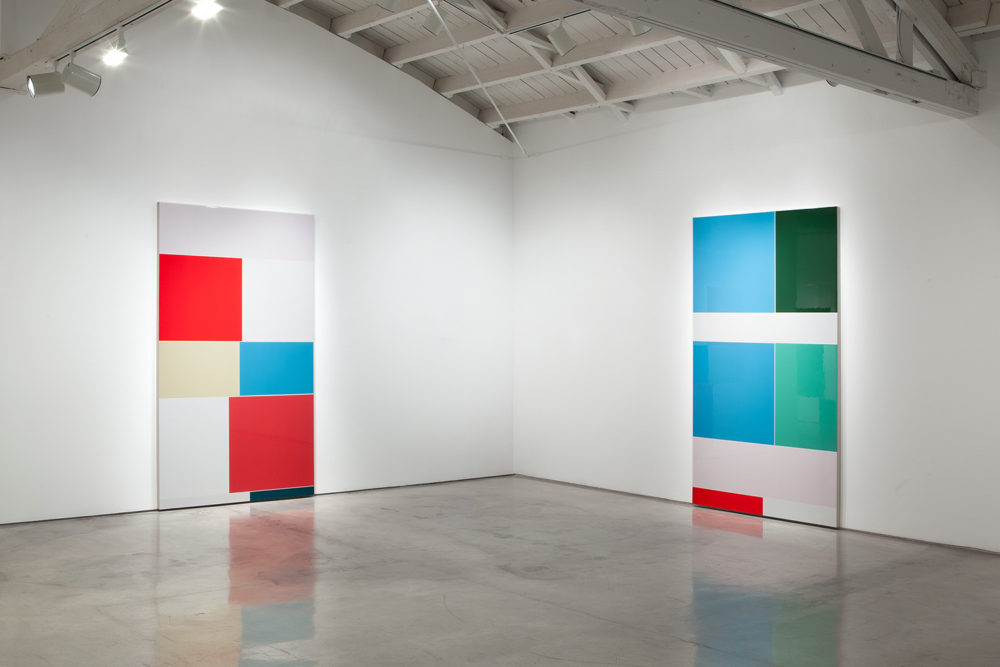
- Source: Artreview Magazine
- Author: Larry Wilcox
- Date: May 2016
- Format: PRINT AND DIGITAL
Review: Michael Genovese
Intervals

Chasing wind, Pessimism one and two, Installation view from Intervals at Moran Bondaroff in Los Angeles
When the Dallas Museum of Art installs its Piet Mondrian collection, the result is illuminating. The museum has enough work, made over a long enough period of time, to allow one into the artist’s head, to see his particular form of pictorial reduction. In the world of popular Mondrian (in which his work is found on coffee cups, cupcakes and Yves Saint Laurent dresses), it is easy to forget the moody plein-air roots of the artist’s blocks of color and black lines. Mondrian painted liminal moments, when the fading sun threw dark shadows and stark contrasts across a row of trees. Analysing moments of transition or in-between spaces was how Mondrian attempted to show the structure of vision.
Michael Genovese’s new paintings recall Mondrian: they offer the grids of colour, perfect surfaces and hard-edge look that made Mondrian a force not only in art but in design. However, Genovese’s grids do not derive from the crepuscular, but instead from moments of transition found online. Specifically, he finds his abstractions through a Google Image search algorithm, which fills (only for an instant) a browser grid with blocks of colour just prior to the full loading images. The result is a momentary abstraction, a visual stand-in for whatever topic that brings a person to Google. If one’s computer has a fast connection, this intermediate Google space may be impossible to see altogether.
Using a screenshot, Genovese matches the color of the grid exactly. The searches that he uses to produce the the colour grids from Google are suggestive and romantic on purpose; words like ‘guilt’ and ‘pessimism’. Genovese paints the resulting grids on canvas, using accumulating layers of gesso and urethane until the surface is flat, pristine and glossy. The vertical works are slightly larger than a door and installed close to the ground; they are human scale, large enough to contain a viewer in their space. As evidenced by Elation (2016), the paintings offer a sober view of their subject matter. The colors seem pleasingly matched no matter whether the search was for ‘astonishment’ or ‘rage’.
What are these paintings? On one hand, they are the straight-ahead depiction of by-products of a system that is attempting to accommodate a contingency in its interface (the fact that the Internet’s speed is determined by a number of hard-to-reconcile variables). On the other hand, the paintings are metaphors and equations for life (and it’s possible expression in systems), in the same vein as a Mondrian, Peter Halley to Terry Winters.
In showing the structure of trees and nature, Mondrian hoped to offer a view the absolute. In showing a slice of the Google method, Genovese offers something else. He shows, poignantly, how the complex and the ragtag quality of existence is forced into and altered by the interfaces used to understand it. These are precise and surefooted colours, answers to riddles of ‘guilt’ and ‘pessimism’ on the order of Deep Thought’s ’42’.

